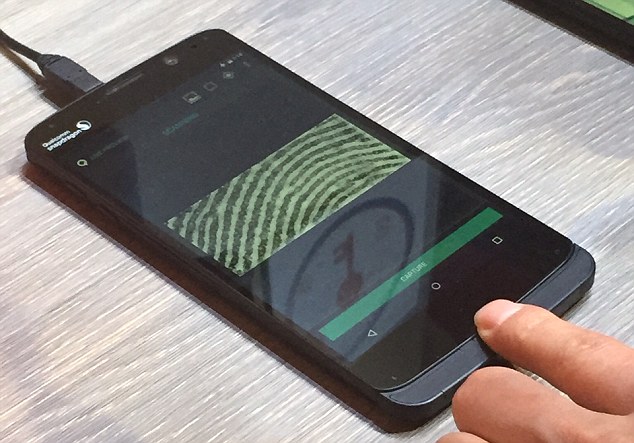For all intents and purposes Apple has held a monopoly on next gen fingerprint scanners ever since their Touch ID sensor made it onto the iPhone. However, Qualcomm has swooped in with their own product, known as Sense ID, in a bid to make the technology widely available as with their massive range of smartphone and mobile device processors.
The addition of ‘ID’ to the end of Sense ID’s name may seem like somewhat of a provocation to Apple, but Qualcomm’s device is pretty technologically different to Apple’s device. Whilst Touch ID utilizes older ‘capacitive’ sensors to identify the user’s finger, Qualcomm’s Sense ID uses newer ‘ultrasonic’ sensors.
SEE ALSO: Google Confirms Wireless Service At MWC
The ultrasonic method uses sound waves to map the contours and crevices of your finger, relaying these minute sound waves and how they react with the surface of the digit in order to map out the texture. It’s not only more accurate and resistant to moisture on the user’s finger, but also much more receptive, even being able to pick up signals through dense materials such as metal.
Of course, this means the Sense ID scanner won’t be limited to a specific finish, and will be able to be embedded a little deeper into a device if needed. The sky’s the limit with regards to the finish of the sensor when included on a smartphone – manufactures can not only cover it with metal, but plastic, glass, Sapphire glass and more, since the sound waves don’t seem to have too much trouble getting through.
Qualcomm teased this new and more widely available sensor along with the latest of their enduring chip range – the SnapDragon 820, which should eventually be compatible with Sense ID. Currently the chip is only working with the Current SnapDragon 810 and 425 chips. However as time moves along it should work with most SnapDragons, the 400 series, 600 series and 800 series ranges.
SEE ALSO: Google Confirms Android Pay Feature
It’ll be a little while yet before we see phone makers get on board with Sense ID – the technology is currently being tinkered with and tested, but Qualcomm says they should be being seen on phones that come around during the second half of the year, which means we might see them in time for the 2015 holiday season.
Whether Apple are going to take offence to the naming of the Sense ID device is debatable, but the technology it uses does indeed surpass current editions of Touch ID for Apple smartphones. Could we see Apple catch up later this year? Only time will tell.
Via: PR Newswire
Via: Techspot

